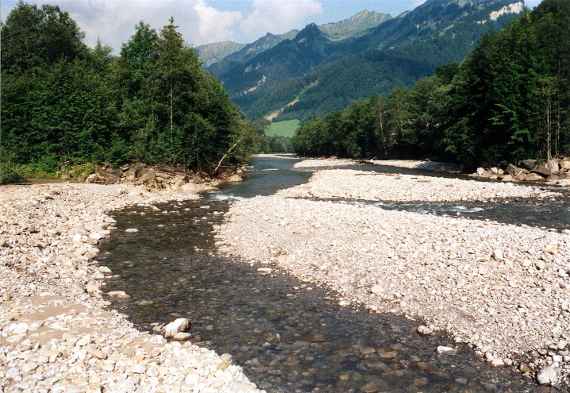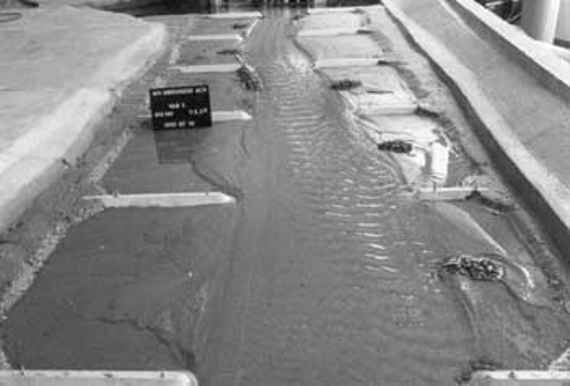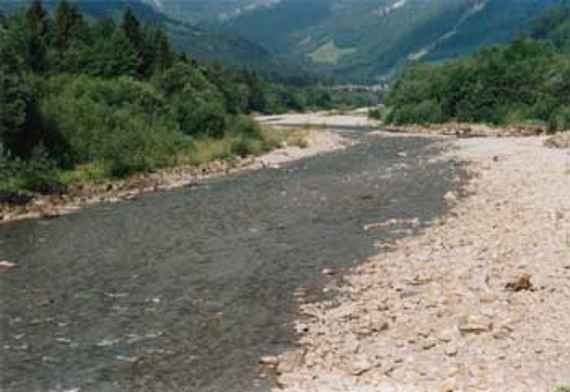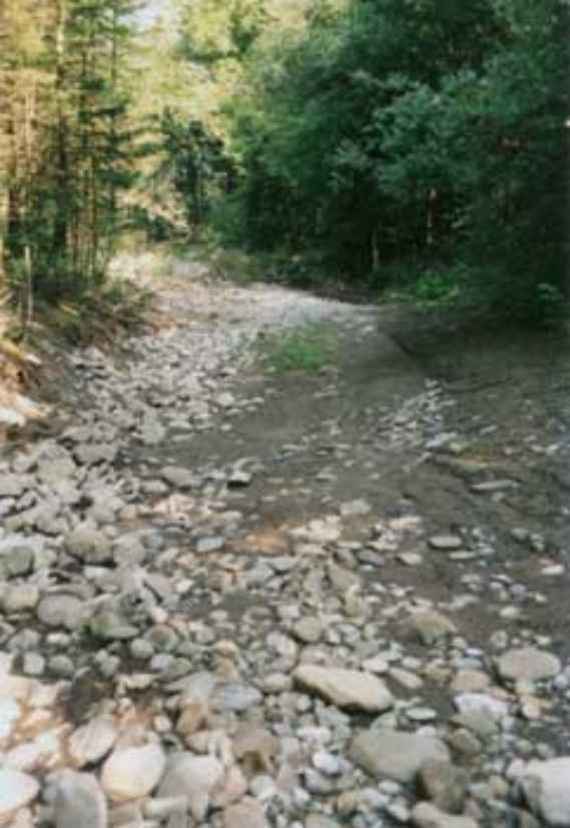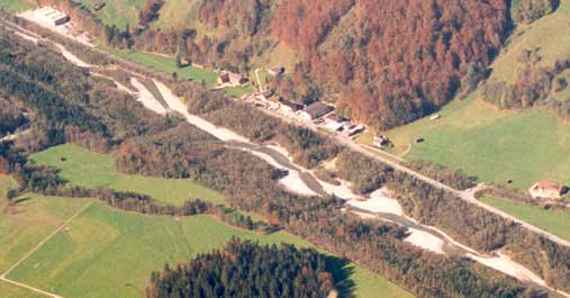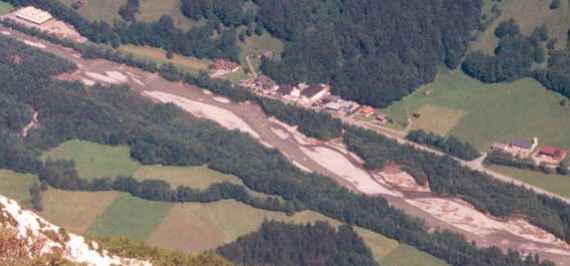Problem and goal:
Between 1952 and 1966, the Bregenzerach was concentrated into a rather straight river bed between reinforced river banks and groynes in order to improve the land use of the valley and reduce the flood risk. The width of the river bed between the groyne heads was reduced to 24 m resulting in a river bed erosion up to 3 m during the following 30 years. Thus, the main goal of the project is to sustainably stabilize the river bed at a dynamic bed equilibrium taking into account the river ecology.
The solution implemented so far:
In cooperation with the institute, the Department Water Management of the Regional Government of Vorarlberg developed a set of measures to stabilise the Bregenzerach between Schnepfau and Mellau (project length 1.8 km, slope about 1 %) which was implemented during the low water period in winter 1995/96. During the planning phase, it was determined to evaluate all measures of the pilot project after a sufficiently long period of observation. The knowledge derived from these observations is planned to be used as a basis for stabilising the upstream river reach which is a state of erosion. Additionally, all information gained shall be used for developing a generalized methodology to stabilise similar alpine river reaches.
The restoration measures included both, widening the river bed and changing the straight morphology into a slightly curved one. For this purpose, groynes were shortened or rebuilt, respectively. In addition, the left-bank floodplain is increasingly used for flood discharges by re-connecting an old sidearm in order to reduce the bed load transport capacity in the main channel.
Physical model of the Bregenzerach (scaled 1 to 100) at a low discharge
Project stretch of the Bregenzerach (summer 2003)
connected old arm in the floodplain
Experience:
The development of the river was continuously documented by means of surveys and analysed for the first time in 2003. The positive effect on both river morphology and ecology is clearly visible. However, the development process has not yet been completed. In many areas, the river bed is still undergoing uplift. The ungrown free gravel areas have increased strongly. Zones with different flow velocities and water depths offer significantly more habitats in the watercourse.
Section of the route before implementation of the measures
same section after implementation of the measures
Outlook for the future:
The now wider riverbed represents a larger bedload reservoir for the morphological dynamics of the water body. An oversupply of bedload or a deficit can thus be better buffered. However, this buffering effect of the river bed can only develop once the current river bed uplift process has been completed and a dynamic balance of the river bed has been established. From the available data it can be concluded that this process will be completed around 2012. However, the point in time is strongly dependent on the flood events and the associated bed load input. Bedload-binding measures in the upper reaches of the river can lead to the dynamic equilibrium being reached much later. If the bedload deficit is too great, the current morphological tendency towards branching can result in the formation of a single channel with decreasing dynamics and variability.
The observations made so far have provided valuable insights into the morphology and bedload transport, which can be transferred to the upstream riverbed. Overall, the chosen planning methodology (mathematical bottom morphological analyses supplemented by a very simple model test) is considered suitable for the Bregenzerach and similar water bodies. It is essential that sufficient information is available on the subject of bedload (size of the bedload grains, quantity of incoming bedload). The informative value of the method could be further improved with supplementary bedload data.

